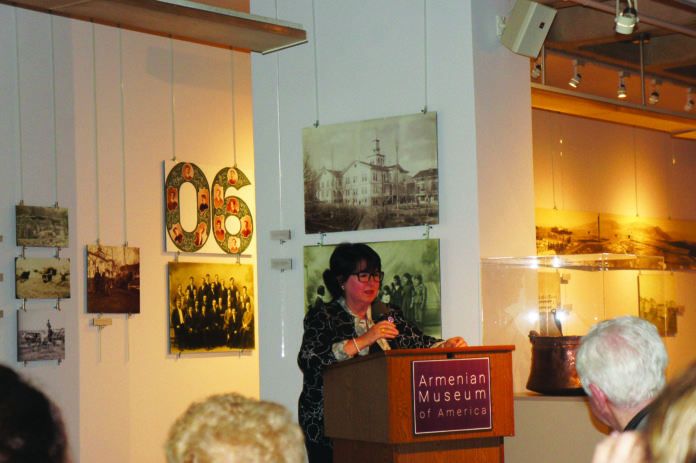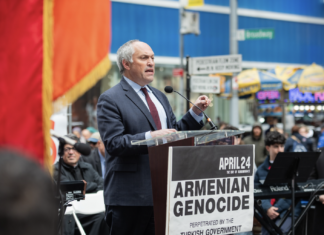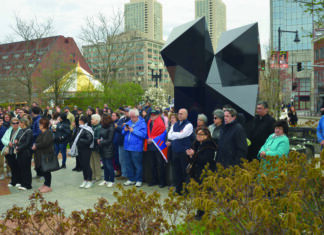WATERTOWN — Adrienne Alexanian presented the memoirs of her father, Yervant Edward Alexanian, at the Armenian Museum of America (ALMA) on May 18. The event was sponsored, in addition to the museum, by the Armenian Assembly of America, the Armenian Cultural Foundation, the Armenian General Benevolent Union (AGBU) New England District, Project SAVE Armenian Photograph Archives and the National Association for Armenian Studies and Research (NAASR).
ALMA Executive Director Berj Chekijian welcomed guests and recognized all the sponsoring organizations for the event. Marc Mamigonian, Director of Academic Affairs for NAASR, introduced the author and the book she edited, Forced into Genocide: Memoirs of an Armenian Soldier in the Ottoman Turkish Army. Alexanian, a graduate of Hunter College in New York with bachelor’s and master’s degrees, taught intellectually gifted students in New York. Active in various Armenian organizations as a volunteer, she has organized panels for the Diocese of the Armenian Church of America (Eastern) and the AGBU at the United Nations and elsewhere. In 2010, Alexanian received the Ellis Island Medal of Honor.
Alexanian explained how the project of disseminating these memoirs, which she edited and published this year through Transaction Publishers, arose. The memoirs came to light while she was going through her father’s effects, intending to donate his papers to appropriate Armenian organizations. Her father, born in 1895, died in 1983, leaving many documents and papers to go through.
He was very active in Armenian organizations after emigrating to the US. Yervant Alexanian was a lifetime member of the Armenian General Athletic Union and the AGBU, and president of the New York chapter of the Pan-Sebastia Rehabilitation Union, as well as later on a member of its executive committee. He was a delegate to the 1947 World Armenian Congress, and later co-commander of the Vasbouragan Lodge of the Knights of Vartan.
He raised funds for the construction of St. Vartan Armenian Cathedral in New York as the chairman of a committee in the Bronx, and supported the Danish-run Birds Nest Orphanage in Lebanon for decades. He and his wife were among the first to send help to the Armenians of Cyprus after the Turkish invasion.
Adrienne Alexanian said that she was upset that she had not found these memoirs earlier, yet was comforted by the timeliness of the publication. Dr. Taner Akçam, a researcher on the Armenian Genocide, told her that it would be useful because of all the recent denialist literature concerning Armenians serving in the Ottoman army.










